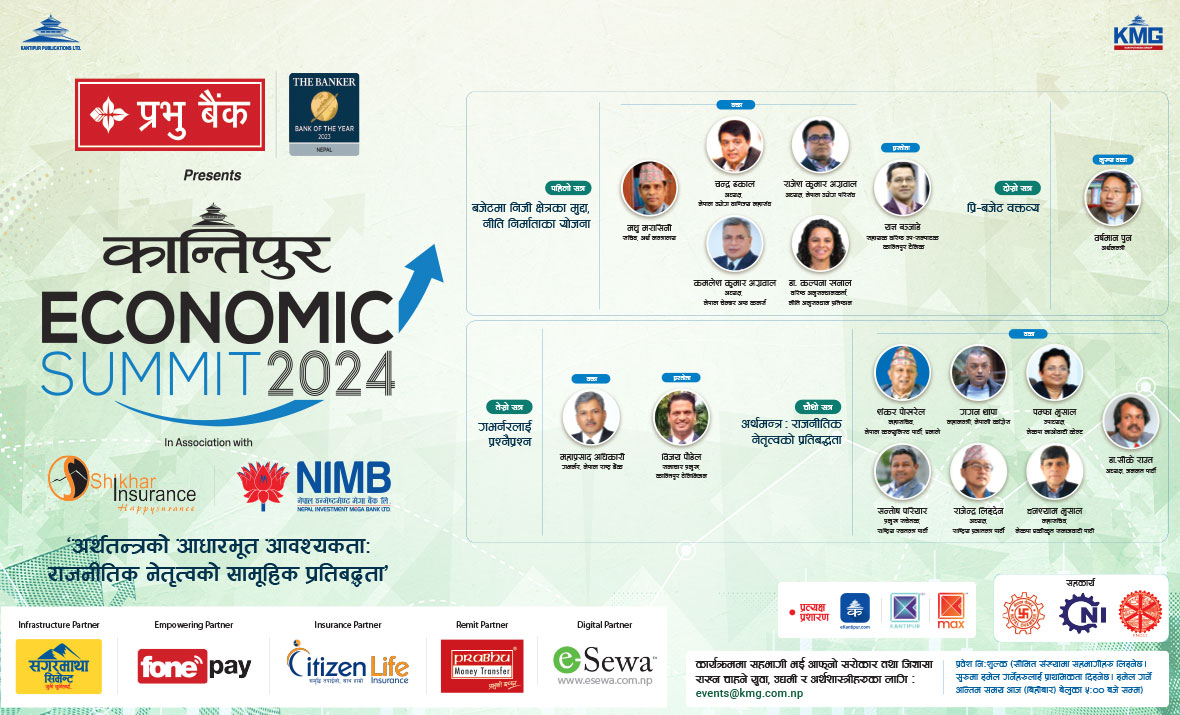5.7 million in family's own house, 8.5 million in rented house
We use Google Cloud Translation Services. Google requires we provide the following disclaimer relating to use of this service:
This service may contain translations powered by Google. Google disclaims all warranties related to the translations, expressed or implied, including any warranties of accuracy, reliability, and any implied warranties of merchantability, fitness for a particular purpose, and noninfringement.


Out of the total 66,66,841 families in the country, 850,000 families are living in rented houses. Only 57 lakh 28 thousand 586 families (86 percent) have their own house. 8 lakh 50 thousand 562 (12.8 percent) are living in rented houses, according to the analysis of residential houses and household facilities released by the National Statistics Office last week.



In the analysis based on the data obtained from National Census 078, it is mentioned that 36 thousand 809 families are living in institutional houses (military, police, prisons, ashrams etc.) and the remaining 44 thousand 884 families are living in other (unowned) houses.
In recent years, although the number of families has been increasing, the number of owning houses is constantly decreasing and the number of people renting seems to be increasing. In 048, 92.6 percent of families were living in their own houses, but by 078, this number had decreased to 86 percent. Hemraj Regmi, Deputy Chief Statistics Officer and Spokesperson of the National Statistics Office, said that when people migrate from one place for various facilities such as education, health, and employment, the number of families living in their own homes has decreased and the number of people living on rent has increased.
"In recent years, the average number of families and the size of the family have been decreasing, which shows that the number of families leaving their joint houses and living in separate rented houses has increased," he said. Although the report analyzed the data of families living in their own, rented, government and other houses, it did not reveal how many families do not have their own houses.
About 81 percent of the families in the municipal area are living in their own houses and about 18 percent are living in rented houses. About 97 percent of the families in the rural municipality area are living in their own houses,'' the report says, "according to the geographical area, 20 percent of the families living in rented houses are in the hills and 5 percent in the mountains."
95 percent or more of the families in Madhes and Sudurpaschim live in their own houses, while in Bagmati, the least 69 percent of the families live in their own houses. "The number of families living in rent is the highest in Wagmati Province, 30 percent, while the lowest is 2.3 percent in Madhesh," the report said. appears.' When classifying the houses based on
use, 71.7 percent are used for residential purpose i.e. family residence, while 10.1 percent are used as sheds and dhansar/matan. It seems that 7.3 percent of the houses that are currently vacant but can be used even though they are built for different uses. 60 percent of the 750,000 houses in the country are detached. According to this, 29 percent of houses are two-story and 2 percent are four-story or more. "According to the state, more than 84 percent of houses in Madhes are single-family houses, while this number is 64 and 63 percent in Koshi and Lumbini respectively," the report said. ) are two-story and 22 percent of the houses are three-story.' 21.6 percent of the houses were built between eight and 14 years ago and 18 percent between 15 and 24 years ago. Based on the geographical area, 55 percent of the houses in the Himalayas and 44 percent in the Terai were built after the 072 earthquake. According to the report, availability of subsidy for residential house construction is 32.2 percent and 4 percent in Himalayan province. The
report also shows that the number of families in Nepal is decreasing rapidly. "According to the average family number and family size, Sardar has 1.2 families living in one house and the average family size is 4.4," the report said, "The number of families living under one roof in Sardar is the highest in Wagmati (1.4 families). It has been seen that 3.9 members live in each of those families.'
Based on family structure, families living in the Far West and Terai are larger in size (4.7 members per family). Analyzing the size of the family according to the census, it can be seen that the proportion of small families (up to four members) is gradually increasing and the proportion of large families (five members or more) is decreasing in each census year. Looking at the nature of residential houses, 76.5 percent of the houses are concrete (both walls and roofs are made of permanent construction materials). The number of concrete houses in 058 was 36.6 and in 068 it was 58.4 percent. At present, 15.8 percent of the houses are semi-finished (one of the walls or roof is made of permanent and the other is temporary construction materials) while 7.8 percent of the houses are kachi (both the walls and the roof are made of temporary construction materials).
Province-wise, Gandaki and Wagmati provinces have the highest number of 96 and 93 percent families living in concrete houses respectively. This ratio is seen at 78.2 percent in Karnali. "About 74 percent of families are living in their own concrete houses, 17 percent are semi-constructed houses and 9 percent are living in unroofed houses," the report said. Of the total families living in rented houses, 93 percent of families live in solid houses, while only about 9 percent live in semi-solid houses. The number of families with bank accounts is 61.4 percent, while 13 percent have received technical education or vocational training.
23.4 percent of families have at least one member outside the country, 49 percent of families have agricultural land and livestock, 34.2 percent of families use radio and 49.4 percent use television.
73.2 percent of families using mobile phones, 27.3 percent of families with motorcycles and scooters, 34 percent of families using bicycles, 53.1 percent of families using electrical equipment (fans, refrigerators, washing machines, etc.), pipes (section According to the report, there are 57 percent of households with access to drinking water, 4.6 percent of households dependent on jar and bottled water, 51 percent of households cooking with firewood, 44.3 percent of households using LPG gas, and 92 percent of households with access to electricity.
प्रकाशित : चैत्र १३, २०८० ०८:२१

 २४.१२°C काठमाडौं
२४.१२°C काठमाडौं















